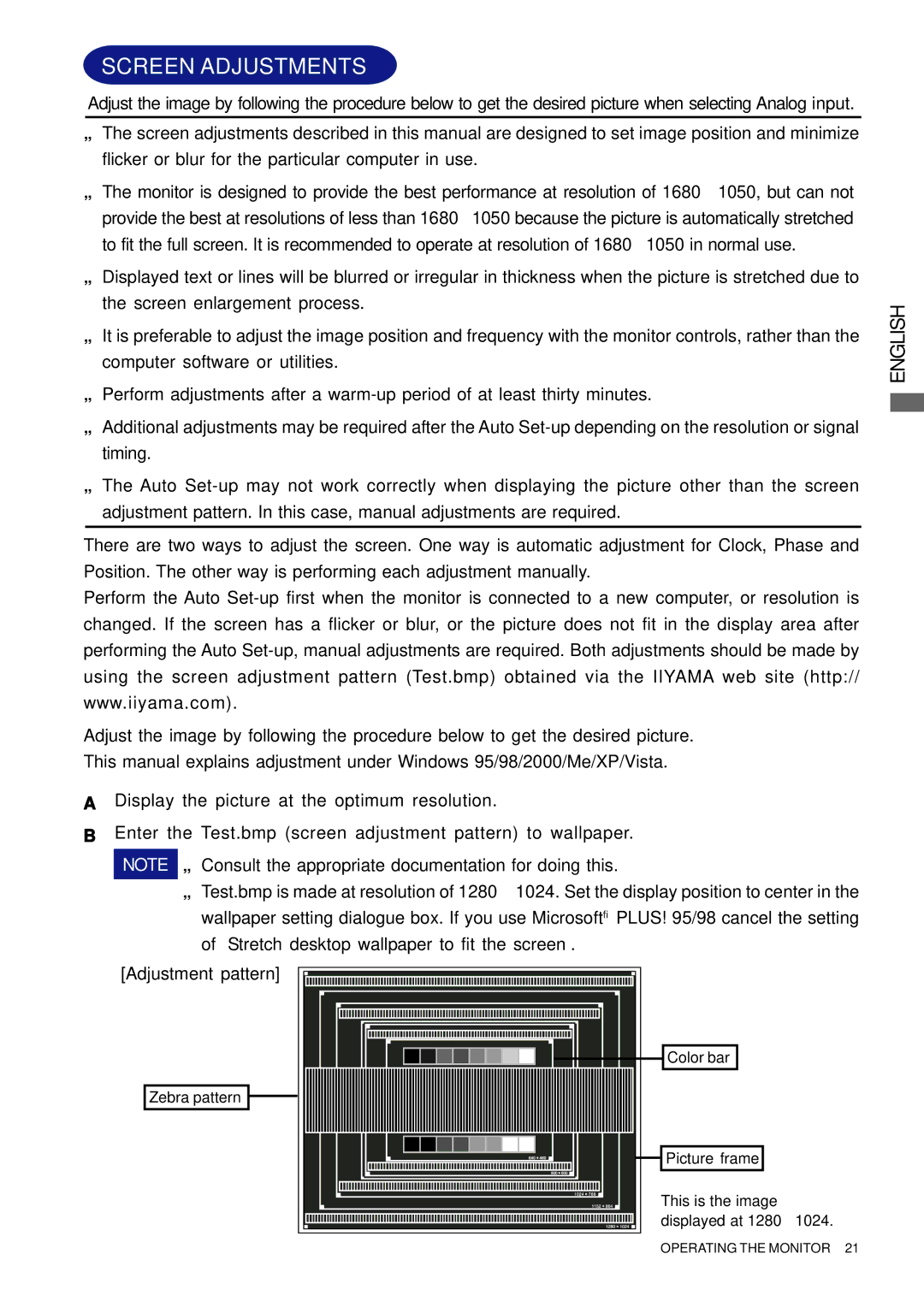
SCREEN ADJUSTMENTS
Adjust the image by following the procedure below to get the desired picture when selecting Analog input.
The screen adjustments described in this manual are designed to set image position and minimize flicker or blur for the particular computer in use.
The monitor is designed to provide the best performance at resolution of 1680 × 1050, but can not provide the best at resolutions of less than 1680 × 1050 because the picture is automatically stretched to fit the full screen. It is recommended to operate at resolution of 1680 × 1050 in normal use.
Displayed text or lines will be blurred or irregular in thickness when the picture is stretched due to the screen enlargement process.
It is preferable to adjust the image position and frequency with the monitor controls, rather than the computer software or utilities.
Perform adjustments after a
Additional adjustments may be required after the Auto
The Auto
There are two ways to adjust the screen. One way is automatic adjustment for Clock, Phase and Position. The other way is performing each adjustment manually.
Perform the Auto
Adjust the image by following the procedure below to get the desired picture. This manual explains adjustment under Windows 95/98/2000/Me/XP/Vista.
A Display the picture at the optimum resolution. |
B Enter the Test.bmp (screen adjustment pattern) to wallpaper. |
NOTE Consult the appropriate documentation for doing this. |
Test.bmp is made at resolution of 1280 × 1024. Set the display position to center in the |
wallpaper setting dialogue box. If you use Microsoft® PLUS! 95/98 cancel the setting |
of “Stretch desktop wallpaper to fit the screen”. |
[Adjustment pattern]
Color bar
Zebra pattern ![]()
![]()
![]() Picture frame
Picture frame
This is the image displayed at 1280 × 1024.
ENGLISH
OPERATING THE MONITOR 21
